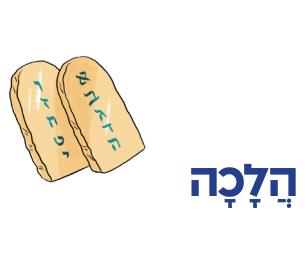Illustration Credit: Rivka Tsinman

Halakhah הֲלָכָה
What’s a hesped?
When Sarah dies at the beginning of this week’s parashah, the Torah tells us how Avraham responds:
...וַיָּבֹא אַבְרָהָם לִסְפֹּד לְשָׂרָה וְלִבְכֹּתָהּ:
…Avraham proceeded to mourn for Sarah and cry for her.
Two verbs (action words) describe what Avraham did: לִסְפֹּד (lispod, to mourn) and לִבְכּוֹת (livkot, to cry).
The first verb here refers to giving a הֶסְפֵּד (hesped, eulogy). A hesped is a kind of speech where you say things about who a person was in life, the good qualities they had, and what was important to them. Sarah’s hesped is the first record of such a speech that we have in the Torah. It shows how much Avraham cared for her and how special she was.
Avraham’s behavior teaches us that whenever someone dies, one of the things we should do is to offer a hesped.
But the second verb shows that Avraham also cried, and this teaches us something about the nature of a hesped. Here is how the Shulhan Arukh describes it:
מִצְוָה גְּדוֹלָה לְהַסְפִּיד עַל הַמֵּת כָּרָאוּי. וּמִצְוָתוֹ שֶׁיָּרִים קוֹלוֹ לוֹמַר עָלָיו דְּבָרִים הַמְּשַׁבְּרִים אֶת הַלֵּב, כְּדֵי לְהַרְבּוֹת בְּכִיָּה וּלְהַזְכִּיר שִׁבְחוֹ.
It is a huge mitzvah to offer a proper hesped for someone who has died. It should be done with a loud voice, saying things that will break people’s hearts, so that they will cry a lot and remember the good things about the person.
A hesped is supposed to make people sad. There is a mitzvah to comfort mourners after the person who died has been buried, but before burial it is actually important to encourage people to cry and to really feel the sadness of the person who died.
Because the hesped is meant to be so sad, it is shortened or eliminated on various happy days, like Hol Hamoed, Rosh Hodesh, Hanukkah, or Purim. (See Shulhan Arukh Yoreh De’ah 401.)
- Can you find someone else who receives a hesped in the Torah?

-------------------
-------------------






